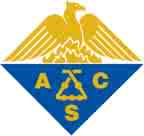 Symposium
of the
DIVISION of COLLOID and SURFACE CHEMISTRY
Symposium
of the
DIVISION of COLLOID and SURFACE CHEMISTRY

Department of Chemistry, SUNY-Potsdam Slide 1 2 3 4 5 6 7 8 9 10 <<< >>>
Presented at:
The National Meeting of the American Chemical Society
Boston, MA, August 22-26, 2010
 Symposium
of the
DIVISION of COLLOID and SURFACE CHEMISTRY
Symposium
of the
DIVISION of COLLOID and SURFACE CHEMISTRY

4. Detection of homocysteine based on gold nanoparticle plasmonic coupling monitored by elastic light scattering
Magdalena Stobiecka, Jeffrey Deeb, and Maria Hepel, Department of Chemistry, State University of New York at Potsdam, 44 Pierrepont Ave., Potsdam, NY 13676, Fax: 315-267-3170, hepelmr@potsdam.edu
|
Abstract. Homocysteine is a sulfur containing amino acid which is considered as a biomarker of oxidative stress and many diseases such as stroke, vascular diseases, diabetes, and Alzheimers. In this work, we have investigated new techniques for rapid detection of homocysteine. Based on the high sensitivity of the resonance elastic light scattering (RELS) spectroscopy to the interparticle surface plasmon coupling in gold nanoparticle solutions induced by homocysteine, we have developed a simple and sensitive assay for this biomarker. Gold nanoparticles capped with non-ionic fluorosurfactant (Zonyl) have been used in these investigations. The addition of homocysteine to Zonyl-capped AuNP results in strong enhancement of RELS signals, as well as the color change, bathochromic shift of the surface plasmon band, and the increase of absorbance. These effects confirm the homocysteine-induced gold nanoparticle assembly. To corroborate the Zonyl and Hcys adsorption on AuNP, separate experiments were performed using solid Au quartz crystal piezoelectrodes.
Figure 1. Electron density surfaces with mapped electrostatic potential for a fluorosurfactant Zonyl molecules adsorbed on a model gold nanoparticle; color coded electrostatic potential mapping: from red to blue (more positive). |
 |
|
Back to Student/Faculty Research Department of Chemistry